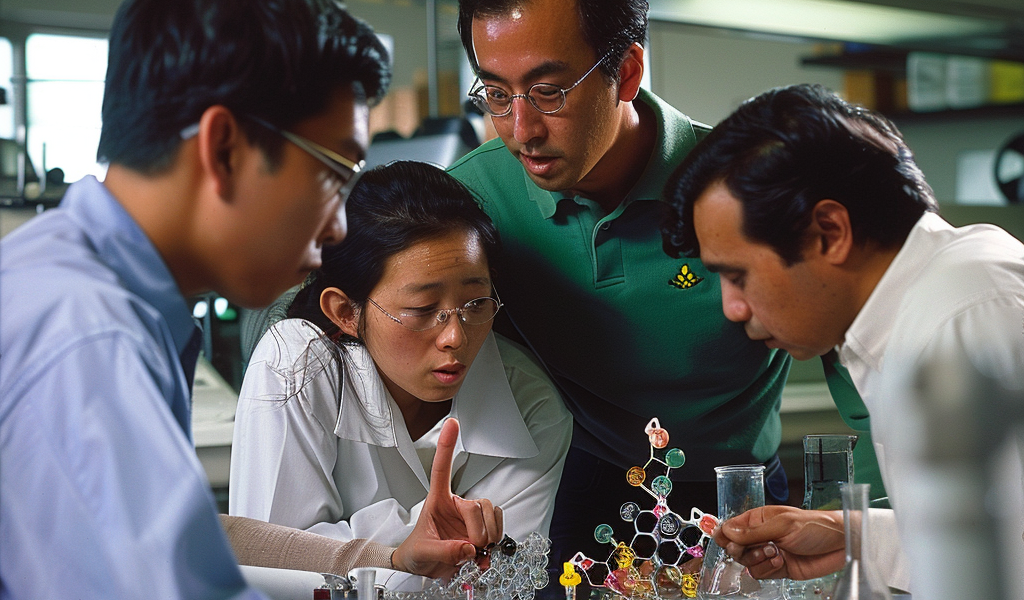In a remarkable turn of events within the realm of chemistry, researchers at the Rostock Leibniz Institute for Catalysis (LIKAT) have stumbled upon a groundbreaking reaction that could reshape established methodologies in organic synthesis. Initially aimed at developing a phosphorus-based ligand, the research led by Dr. habil. Christian Hering-Junghans and Prof. Torsten Beweries instead yielded a novel compound: triazabutadiene. This unexpected outcome has given rise to what is now known as the Azide-Wittig reaction, a significant advancement in the field.
The Azide-Wittig reaction, conceptualized by Kushik, a Ph.D. student from India under the guidance of Dr. Hering-Junghans, represents an innovative synthesis pathway that intertwines well-known chemical processes. The Wittig reaction, which earned its Nobel Prize recognition in 1979, is a fundamental method for creating carbon-carbon double bonds (C=C) in organic compounds. These double bonds are crucial structural components in various functional molecules.
Despite the initial focus on phosphorus-carbon double bonds (P=C) for a di-aldehyde compound, Kushik’s research took an unexpected turn. While attempting to synthesize the desired ligand, he found that only one aldehyde group was transformed into the intended P=C bond, leaving the other aldehyde group unreacted. This deviation, rather than being seen as a setback, was embraced as an opportunity for exploration and discovery.
Dr. Hering-Junghans emphasized the importance of such disruptions in research, stating, “When we encounter unexpected results, it challenges us to investigate their origins. These moments can lead to profound insights that advance our understanding of chemistry.” Following collaborative discussions, Kushik decided to pivot his approach, focusing on the unreacted aldehyde group.
In a stroke of ingenuity, Dr. Hering-Junghans suggested that instead of pursuing the original phosphorus-carbon bond, Kushik could explore the insertion of a nitrogen-carbon double bond (N=C) alongside the P=C bond. This shift in perspective opened new avenues for the synthesis of complex organic molecules.
The resulting Azide-Wittig reaction has garnered significant attention within the scientific community. Even prior to its publication in the prestigious journal Angewandte Chemie International Edition, the research paper received over 10,000 views and was widely shared across various platforms. The enthusiasm surrounding the paper highlights the Wittig reaction’s esteemed status in chemistry education and its critical role in organic synthesis.
Aldehydes, the building blocks of this research, are characterized by their functional group, which consists of one carbon, one hydrogen, and one oxygen atom. In the case of di-aldehydes, two such groups are present, making them versatile intermediates in chemical reactions. Kushik’s innovative approach not only underscores the potential of the Azide-Wittig reaction but also emphasizes the importance of adaptability in scientific research.
The implications of this new reaction extend beyond academic curiosity; they may pave the way for more efficient synthesis methods in organic chemistry. By integrating nitrogen-carbon bonds into the synthesis process, chemists could potentially access a broader range of functionalized molecules, enhancing the toolkit available for drug development, materials science, and other applications.
As the field of chemistry continues to evolve, the discovery of the Azide-Wittig reaction serves as a reminder of the unpredictable nature of scientific inquiry. It highlights the necessity for researchers to remain open to unexpected results, as these can often lead to significant breakthroughs. The collaboration between Kushik, Dr. Hering-Junghans, and Prof. Beweries exemplifies the power of teamwork in the pursuit of knowledge and innovation.
In a world where the boundaries of scientific understanding are constantly being pushed, the Azide-Wittig reaction stands as a testament to the creativity and resilience of researchers. As further investigations unfold, the chemistry community eagerly anticipates the potential applications and advancements that may arise from this novel synthesis pathway.





